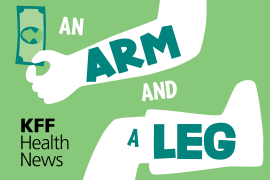SAN DIEGO: County HHS Report Finds Majority of AIDS Cases in Drug Users
The San Diego County Department of Health and Human Services on Tuesday released a report that suggests that it is "important not to be complacent" when reducing the "risky behavior" of injection drug use to help slow the spread of HIV. The status report on HIV/AIDS in San Diego County presents demographics and the number of AIDS cases recorded in the county over the past 20 years. With 10,000 known cases, the disease remains a "major preventable source of illness, disability and death." The study determined that while the majority of AIDS cases involve men who have sex with men, these numbers are dropping, while cases among women, Hispanics and intravenous drugs users, their sexual partners and offspring are on the rise. The number of AIDS cases resulting from "injecting drugs and secondary spread to sexual partners" accounts for an increasing proportion of AIDS cases each year, according to the report. In fact, the percentage rose from 2% of cases in 1984 to 13% in 1999, with one in four cases last year linked to either direct or indirect exposure to injection drugs. There are approximately 10,000 to 15,000 needle users in the county, and since "most" share needles "at some time or another," the report says HIV and related problems, such as hepatitis B and hepatitis C, "will continue to plague the community." Women, who make up a "small proportion" of the county's total AIDS cases at only 7%, comprise about 33% of cases resulting from injection drug use. In addition, one-third of all AIDS cases are people of color, but more than half of injection drug AIDS cases are people of color. The study also found that among children with AIDS, six in 10 were born to women who were intravenous drug users or the sexual partner of one. A different study completed in 1998 found that there were as many as 28,000 intravenous drug users in the county, and about eight in 10 reported sharing needles (County Status report, June 2000). The new report, however, was released one week after the San Diego City Council "declared a state of health emergency" because of the number of HIV and hepatitis cases. The San Diego Union-Tribune reports that this action is a "major step" toward a needle exchange program, a move the County Board of Supervisors "has repeatedly refused to do." Such a program has been endorsed by "numerous" medical and scientific agencies, as well as government health agencies, "as a way to reduce the spread of AIDS." County Supervisor Dianne Jacob disputed the notion that there is a health emergency, and said that a needle exchange program "would send the wrong message to children" (Clark, San Diego Union-Tribune, 10/25). Still, other California cities, including Berkeley, Los Angeles, San Francisco and Santa Cruz, have adopted "emergency ordinances" that allow needle exchange programs (AP/Sacramento Bee, 10/26). With "41,000 years of potentially productive lives" lost to AIDS between 1995 and 1998, the study says "better information" directed at substance users remains a "crucial measure" to slow the spread of HIV. While pointing out the "good news" that "new drugs, attention to health and social support and a caring community" have accounted for a "dramatic drop" in the number of AIDS deaths, the study concludes that "[d]ata, information, and communication are the fundamental underpinnings of improved services and more effective efforts at addressing the AIDS/HIV epidemic locally" (County Status report, June 2000). The entire report is available at: http:/ /www.co.san- diego.ca.us/cnty/cntydepts/health/announce/hiv/hivtoc.pdf. Note: You must have Adobe Acrobat Reader to view the report.
This is part of the Morning Briefing, a summary of health policy coverage from major news organizations. Sign up for an email subscription.





